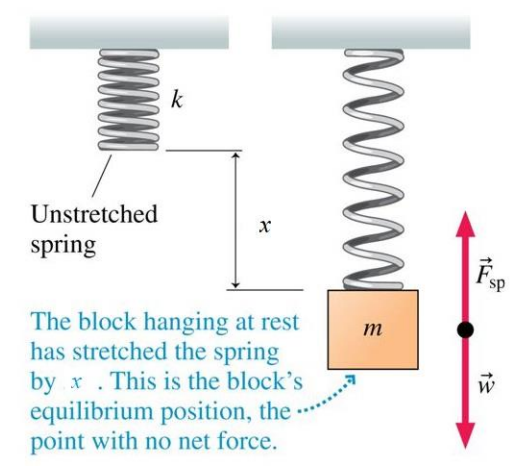- English
- বাংলা
−Table of Contents
This is an old revision of the document!
4. Spring constant from extension and period
1. Introduction
Spring constant is a property of a spring; its value should be a constant. You will calculate using two different methods: first, using the extension caused by a hanging mass and second, using the period for a given hanging mass .

When a mass is hung from an unstretched spring, it is extended by a length because of the gravitational pull of the earth on the mass. The spring exerts a restoring force on the mass opposite to its gravitational force . According to Hooke’s law
where is the spring constant. Replacing we get and
For the second method, you will use the relation between period and mass
which leads to
The values and should be very similar because they are both the spring constant of the same spring.
2. Method and data
| Mass [g] | Extension [cm] | Time for 10 oscillations [s] |
|---|---|---|
| 100 | ||
| 150 | ||
| 200 | ||
| 250 | ||
| 300 |
3. Spring constant from extension
4. Spring constant from period
5. Discussion and conclusion
- Why are and different?
- Which one is greater, or ? Why?
- In which method we have higher fitting error?
